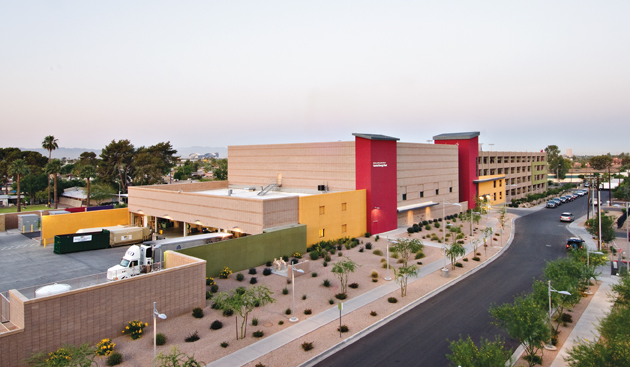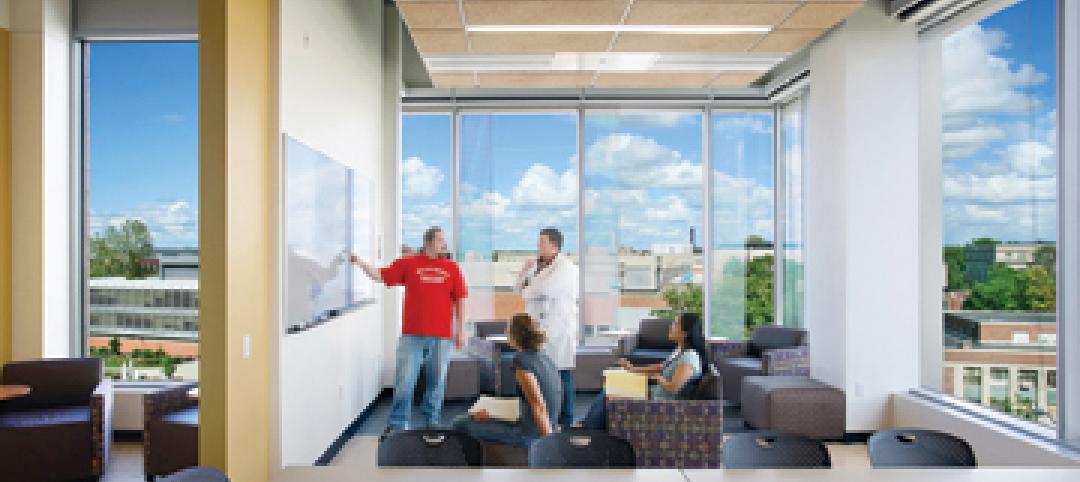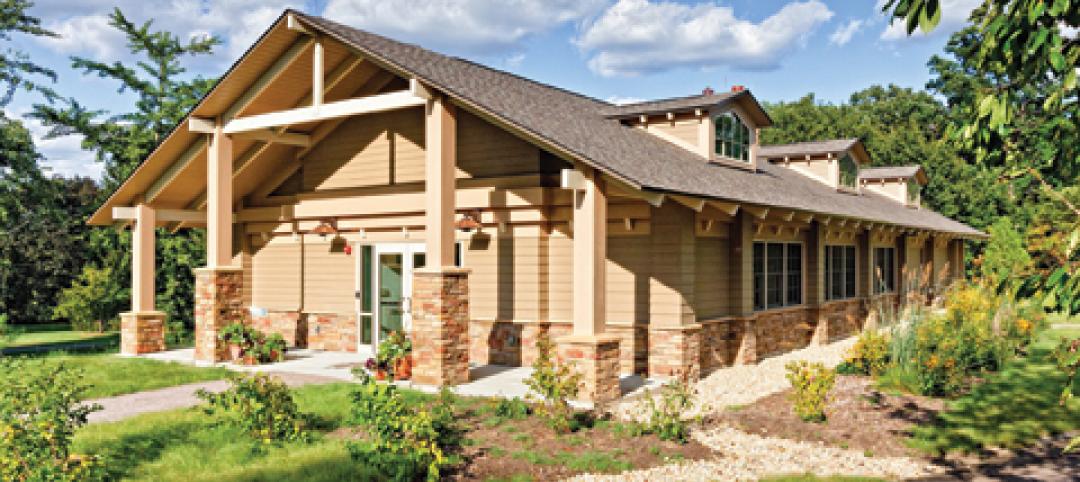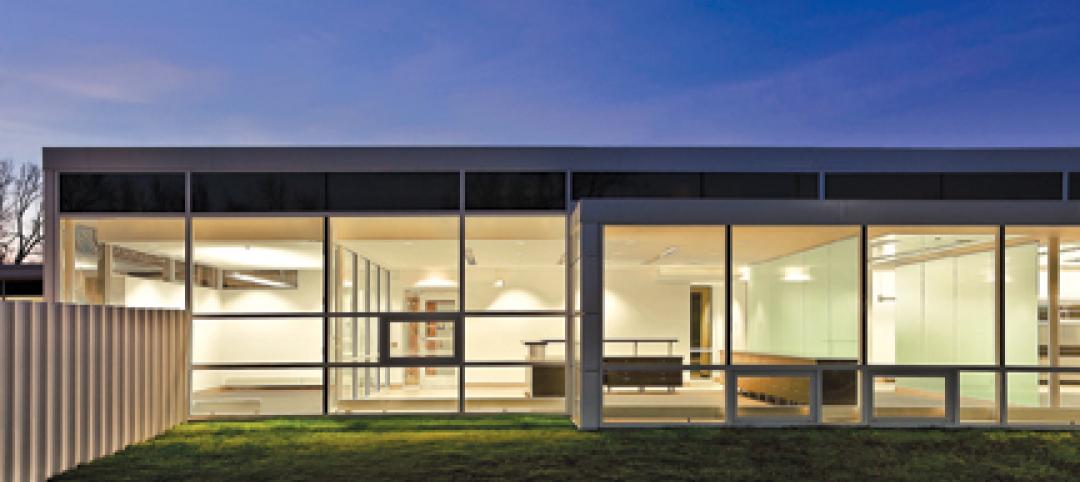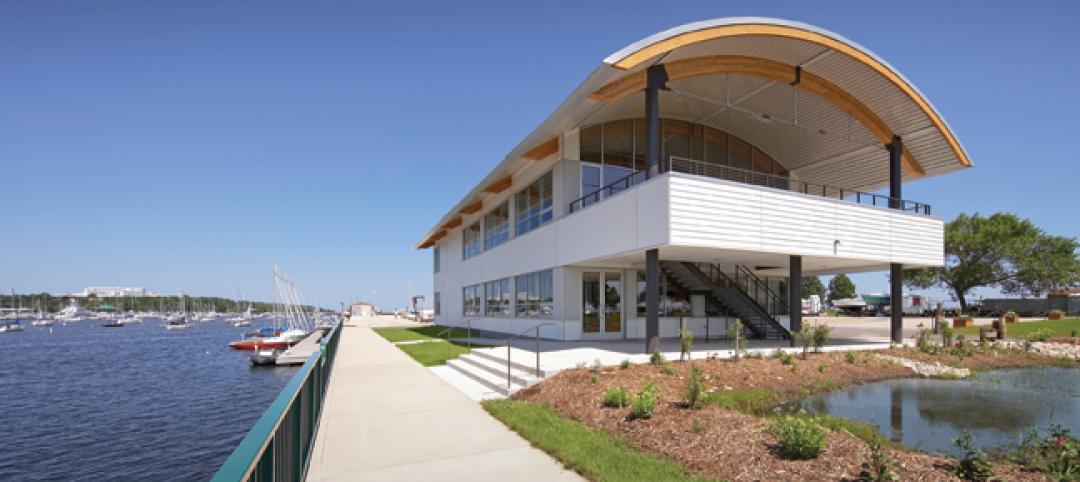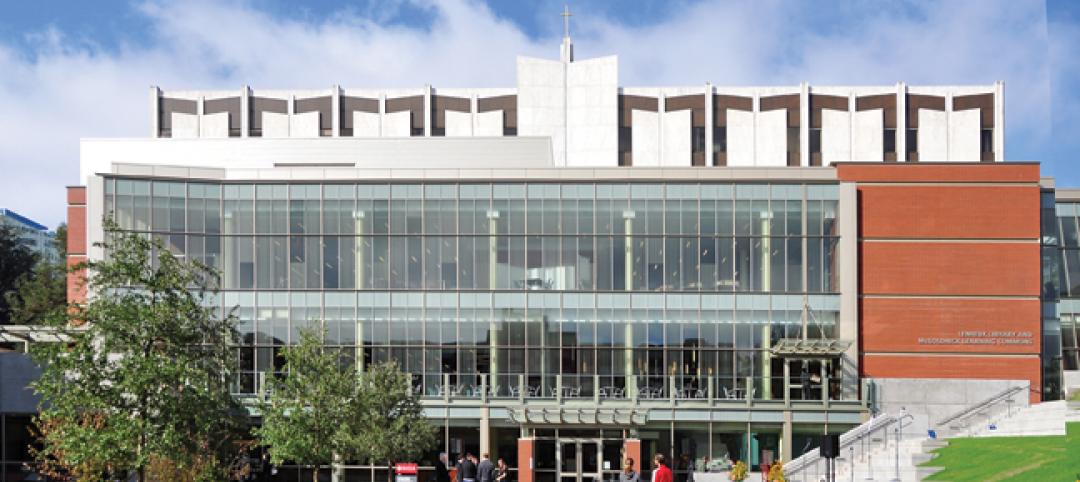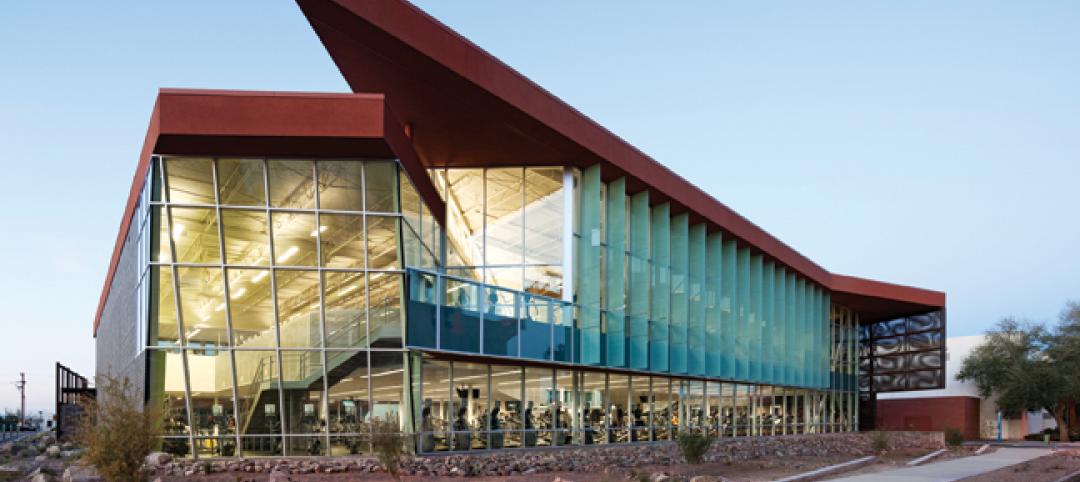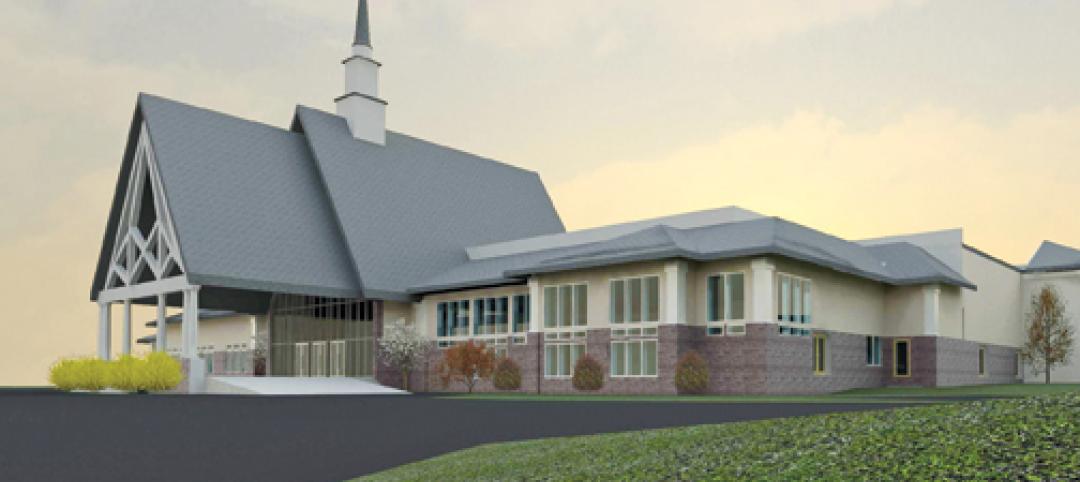Healthcare construction has slowed a bit in the last few years, but it remains a critically important sector for many AEC firms. While healthcare clients are demanding sustainable design and construction as a matter of course, green building is no longer limited strictly to hospital projects.
In Seattle, Swedish Cancer Institute has installed a factory-fabricated radiotherapy treatment “vault” to house its TomoTherapy treatment system. RAD Technology Medical Systems manufactured steel modules for the vault at its production facility, along with prefab wood modules for the patient exam and office portion of the nearly 4,000-sf facility. It is believed to be the first radiation center to earn LEED Silver certification.
Another first—at least for a privately owned facility—goes to San Francisco Surgical Arts’ LEED-CI Platinum (v.2009) oral and maxillofacial surgery office. Environmental Building Strategies led the Building Team—medical designer Kohan Inc. and contractor All Phase Builders—in reducing lighting power 37% and water usage 40% over conventional facilities. Solar-powered keyboards and Energy Star-qualified LED monitors and appliances were also used.
For the $538 million expansion of Phoenix Children’s Hospital (designed by HKS to Green Guide for Health Care standards), Kitchell Contractors built a central energy plant for the 34-acre campus that employs a high-efficiency, 800-ton water-to-water heat pump chiller, a technology widely used in the Middle East.
The central plant will save 5.6 million gallons of water per year, reduce natural gas consumption by 70%, and trim energy and operating costs $11 million over 15 years. The project also received a $464,000 cash award from APS Solutions for Business, the local electrical utility’s energy-conservation program for commercial customers.
In Richmond, Va., Moseley Architects worked with design partners KEI Architects,
Dennis Kowal Architects, and John Dickinson & Partners and GC Kenbridge Construction on the renovation of the Virginia Rehabilitation Center for the Blind and Vision Impaired Administration and Activities Building. The center provides training for blind, vision-impaired, and deaf-blind Virginians to adapt to living with partial or no sight.
Commonwealth guidelines called for the $4,272,600 project to bring the facility, which was built in 1970, up to LEED Silver standards. The team went well beyond that. A central skylit atrium brought light and warmth into the facility. Variable-speed HVAC systems and energy-recovery technology were installed. Single-pane windows were replaced with low-e, double-pane units. Existing halide site lights were upgraded to LED fixtures. Energy use was trimmed 15%, water consumption by 30%, saving 34,000 gallons a year.
As a result of these measures, the project earned LEED Gold certification.
The team also embraced “sustainability” in a larger context in making the center compliant with ADA Accessibility Guidelines. By not focusing exclusively on what could be seen, the team created a design that considered such factors as echoes, smells, and proportions to arrive at what they called a “building for sighted people.”
Another project seeking to break new ground in sustainability is the Palliative Care Campus, a 120-unit Enhanced Assisted Living Residence for persons with serious progressive illnesses. It is said to be the world’s first spirit-centered, enhanced assisted-living community residence. The client, the HealthCare Chaplaincy, is a national leader in research, education, and multi-faith patient-centered care. FXFOWLE Architects is the AOR and designer, in collaboration with MHG Architects and Clodagh Design.
The 16-story, 180,000-sf project, to be built in Lower Manhattan along the East River, will also house a geriatric and palliative care outpatient medical practice, plus research, educational, clinical practice, and administrative spaces. The facility will address not only patients’ physical ills, but also their psychological and spiritual well-being. The HealthCare Chaplaincy hopes the new campus will serve as a national demonstration project for the healthcare industry. +
Related Stories
| Nov 9, 2010
Designing a library? Don’t focus on books
How do you design a library when print books are no longer its core business? Turn them into massive study halls. That’s what designers did at the University of Amsterdam, where they transformed the existing 27,000-sf library into a study center—without any visible books. About 2,000 students visit the facility daily and encounter workspaces instead of stacks.
| Nov 9, 2010
Turner Construction report: Green buildings still on the agenda
Green buildings continue to be on the agenda for real estate owners, developers, and corporate owner-occupants, according to the Turner 2010 Green Building Market Barometer. Key findings: Almost 90% of respondents said it was extremely or very likely they would incorporate energy-efficiency improvements in their new construction or renovation project, and 60% expected to incorporate improvements to water efficiency, indoor environmental quality, and green materials.
| Nov 5, 2010
New Millennium’s Gary Heasley on BIM, LEED, and the nonresidential market
Gary Heasley, president of New Millennium Building Systems, Fort Wayne, Ind., and EVP of its parent company, Steel Dynamics, Inc., tells BD+C’s Robert Cassidy about the Steel Joist Manufacturer’s westward expansion, its push to create BIM tools for its products, LEED, and the outlook for the nonresidential construction market.
| Nov 3, 2010
First of three green labs opens at Iowa State University
Designed by ZGF Architects, in association with OPN Architects, the Biorenewable Research Laboratory on the Ames campus of Iowa State University is the first of three projects completed as part of the school’s Biorenewables Complex. The 71,800-sf LEED Gold project is one of three wings that will make up the 210,000-sf complex.
| Nov 3, 2010
Park’s green education center a lesson in sustainability
The new Cantigny Outdoor Education Center, located within the 500-acre Cantigny Park in Wheaton, Ill., earned LEED Silver. Designed by DLA Architects, the 3,100-sf multipurpose center will serve patrons of the park’s golf courses, museums, and display garden, one of the largest such gardens in the Midwest.
| Nov 3, 2010
Public works complex gets eco-friendly addition
The renovation and expansion of the public works operations facility in Wilmette, Ill., including a 5,000-sf addition that houses administrative and engineering offices, locker rooms, and a lunch room/meeting room, is seeking LEED Gold certification.
| Nov 3, 2010
Sailing center sets course for energy efficiency, sustainability
The Milwaukee (Wis.) Community Sailing Center’s new facility on Lake Michigan counts a geothermal heating and cooling system among its sustainable features. The facility was designed for the nonprofit instructional sailing organization with energy efficiency and low operating costs in mind.
| Nov 3, 2010
Seattle University’s expanded library trying for LEED Gold
Pfeiffer Partners Architects, in collaboration with Mithun Architects, programmed, planned, and designed the $55 million renovation and expansion of Lemieux Library and McGoldrick Learning Commons at Seattle University. The LEED-Gold-designed facility’s green features include daylighting, sustainable and recycled materials, and a rain garden.
| Nov 3, 2010
Recreation center targets student health, earns LEED Platinum
Not only is the student recreation center at the University of Arizona, Tucson, the hub of student life but its new 54,000-sf addition is also super-green, having recently attained LEED Platinum certification.
| Nov 3, 2010
New church in Connecticut will serve a growing congregation
Tocci Building Companies will start digging next June for the Black Rock Congregational Church in Fairfield, Conn. Designed by Wiles Architects, the 103,000-sf multiuse facility will feature a 900-person worship center with tiered stadium seating, a children’s worship center, a chapel, an auditorium, a gymnasium, educational space, administrative offices, commercial kitchen, and a welcome center with library and lounge.


